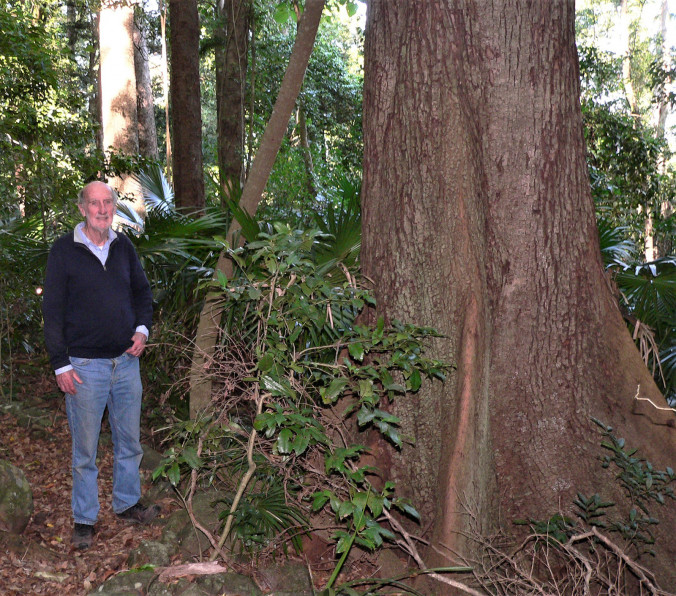Recently I was fortunate to have had a tree adventure in Neverland, where I was privileged to spend some time with Peter Pan and Wendy. True! Neverland is a property in the Illawarra region of NSW, and is the home of Peter and Wendy McAra, better known as Peter Pan and Wendy.
They are both distinguished retired academics, and although you wouldn’t think so to look at him Peter is also a much celebrated author of numerous romantic novels and stage plays. But in addition to these interests, and perhaps best of all, Peter and Wendy are red cedar enthusiasts with a red cedar plantation and area of native forest to prove it.
So, I consider myself to have been honoured to spend some time in their company, and to look around their Neverland property. I was constantly on the lookout for Captain Hook!
Among his many attributes Peter has established a reputation amongst tree enthusiast groups and farmers for his knowledge about the virtues and technical idiosyncrasies of establishing red cedar plantations. His three red cedar plantation blocks at Neverland are now ten years old.
Commonly known as red cedar, (Toona ciliata) is a large rainforest tree, up to a height of 40–60 metres. The natural range of red cedar is from southern parts of Asia through New Guinea into Australia. In Australia it is found on the east coast between southern Queensland down to the southern Illawarra region of NSW.
Due to its size and valuable timber this tree species has been extensively logged since European settlement. The timber is used in cabinetry for its softness, texture and rich red colour, hence the name red cedar.
The bark of juvenile trees is smooth, although mature trees have scaly, fissured bark. Even as a juvenile tree the buttress root can be identifiable, and will develop to be quite protruding. The white or soft pink flowers are 5mm in diameter, in a 30–40 cm inflorescence and bloom in late spring. The fruit is a thin, dry, woody capsule, which splits into five valves.
As one of Australia’s few native deciduous trees, the leaves fall in autumn and grow back in spring. The new leaf growth is a reddish pink colour.
Red cedar was the start of Australia’s timber industry and made a substantial contribution to Australia’s early prosperity. From the end of the eighteenth-century free settlers, freed and run-away convicts, ex-soldiers and seamen went into the forests chasing the ‘red vein’.
On his first expedition to the Hawkesbury River, north of Sydney, Governor Phillip recognised the value of red cedar. He wrote to Lord Sydney on 13 February 1790: “… the wood of some of these trees is very light, they are about the size of large walnut trees, which they resemble, they shed their leaves and bear a small fruit”.
‘Cedar getting’ began along the Hawkesbury River. Lieutenant Colonel Paterson reported on 21 March 1795, that he had allowed the master of the Experiment to take a cargo of cedar to India: “… in the hope that, if it should prove valuable in India, it might be of advantage to His Majesty’s interest in any future intercourse with that country”.
By 1802 logging had grown to such a ferocious extent in the Hawkesbury area, that Governor King, who otherwise encouraged settlement, issued a special order prohibiting the cutting of red cedar without his permission.
However, cedar getters ignored Governor King’s regulation and the hunt for further stands of cedar spread up and down the coast. Sawyers reached Port Macquarie in the early 1820s and moved north to the Manning River by 1828, and to the Illawarra region by1810-1815.
